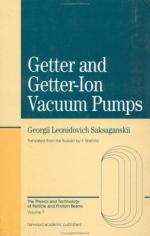|
This section contains 707 words (approx. 3 pages at 300 words per page) |

|
A vacuum is a space completely devoid of matter. A pure vacuum does not exist--even outer space has many particles per cubic meter. In practice one uses a vacuum pump to partially exhaust a space to the highest degree possible, and this partially-evacuated space is what is commonly, if not completely accurately, referred to as a "vacuum."
That air could be pumped like water and create a vacuum in the process was something Aristotle (384-322 B.C.) would never have believed, as he thought that the elements formed a continuum of mass and therefore a vacuum could not exist. His erroneous belief endured for centuries.
However, that changed in 1650, when Otto von Guericke decided to determine by experiment whether a vacuum could, or could not, exist. von Guericke created an airtight mechanism that was able to pump air out of an enclosed container. The resulting vacuum...
|
This section contains 707 words (approx. 3 pages at 300 words per page) |

|


